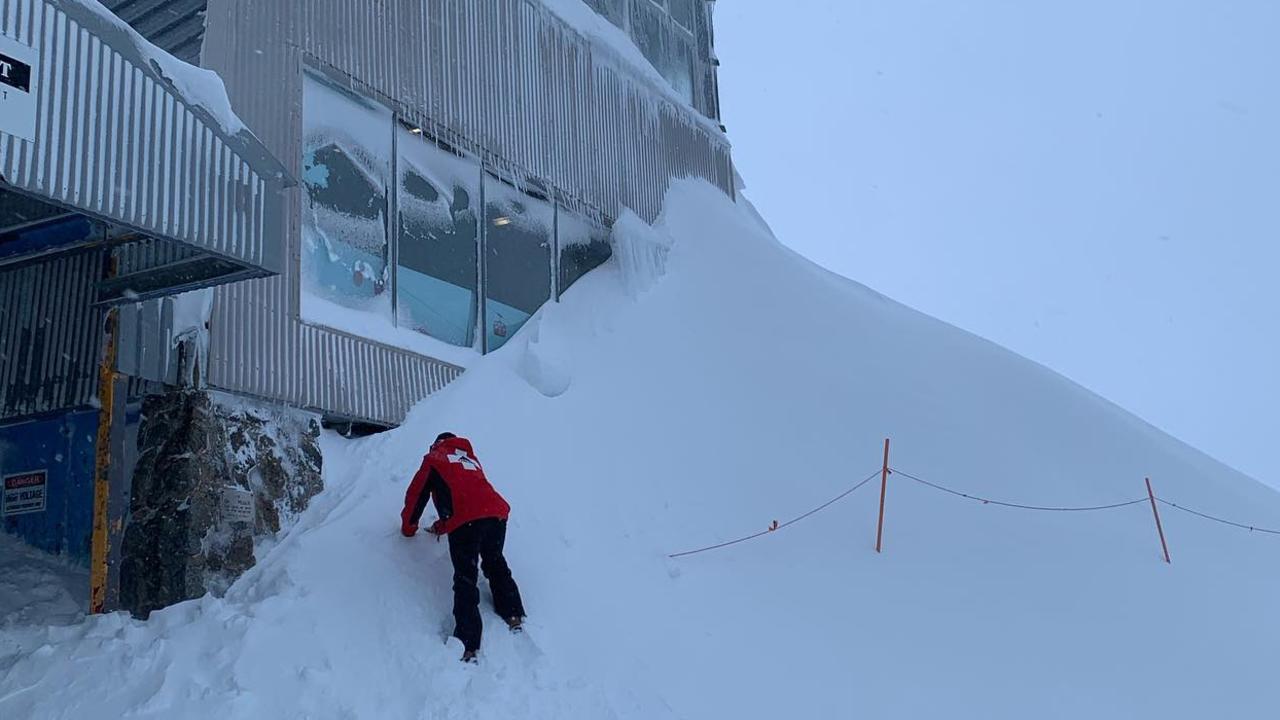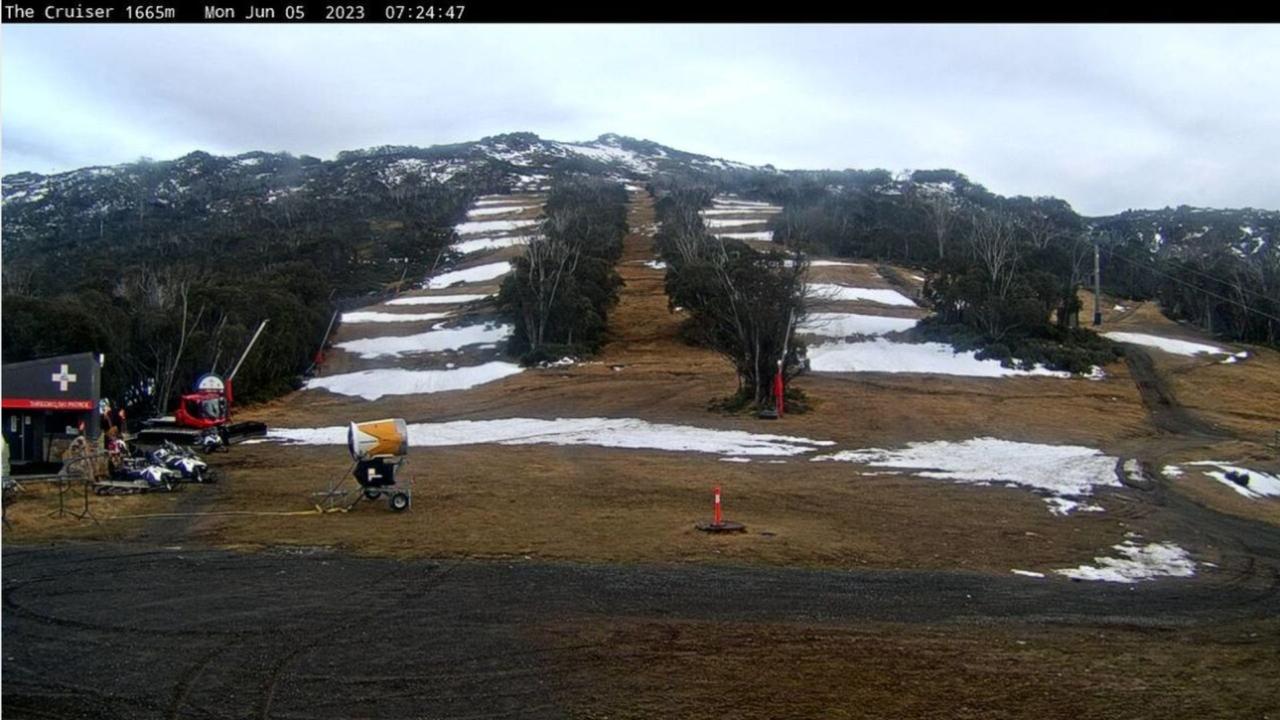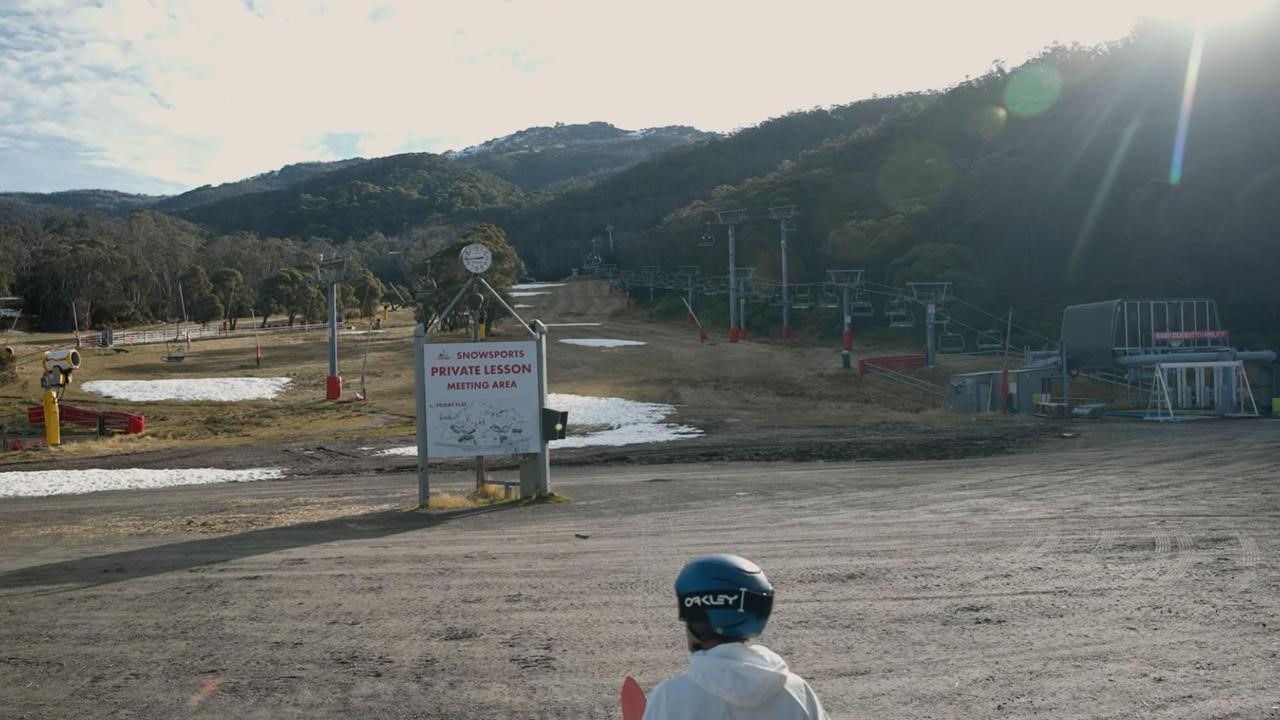‘It’s good out there’: Aussie ski fields roar back to life after bleak start to winter
After a bleak start, the Aussie ski season has kicked into gear with mammoth snowfalls blanketing the east coast in frosty beauty.

After a lacklustre start, winter has made a dramatic entrance in Australia, bringing with it freezing temperatures and mammoth snowfalls that have delighted ski enthusiasts and blanketed the east coast in frosty beauty.
Videos posted online showcase skiers braving blizzard-like conditions at the Perisher Valley resort, just north of Mount Kosciuszko, while Canberra braces for temperatures as low as -5 degrees.
Snow is covering Perisher Valley, as a "bone-chilling" cold snap sweeps Australia's south-east. â„ï¸
— 9News Sydney (@9NewsSyd) June 18, 2023
Weatherzone is warning that "winter is going all-in this year", with skiers welcoming the news following a slow start to the ski season.
MORE: https://t.co/p9wZEjerkM#9Newspic.twitter.com/T4TYhoIIxi
This sudden onslaught of wintry weather has not been limited to specific regions, as even Western Australia, Queensland, New South Wales, and the Northern Territory have experienced the lowest June temperatures in years.
Perisher officials reported a significant overnight snowfall of 3cm, and skiers eagerly shared clips of heavy snow falling and accumulating on rocky outcrops, providing perfect conditions for exhilarating descents down the slopes.
The top of Perisher’s express run recorded bone-chilling temperatures as low as -5.7 degrees.
This cold snap has had a wide-reaching impact across the country, with over 30 weather stations in New South Wales registering temperatures below freezing, particularly in the Central Tablelands west of Sydney. Richmond, located an hour northwest of Sydney, claimed the title of Australia’s coldest place on Monday, as the mercury plummeted to -6.4 degrees.


Weather forecasters predict that the chill will intensify throughout the week, accompanied by rain and gusty winds. By Wednesday morning, Tasmania, Victoria, New South Wales, and even Queensland are expected to experience subzero temperatures.
Ski fields took to social media to let skiers know the conditions.
“CONFIRMED: It’s good out there,” Perisher declared with photos to back it up.
“Happy to be back in the snow globe,” Thredbo resort declared as the snow dump started on Sunday.
Sky News Australia’s meteorologist, Bradlyn Oakes, explained that a cold front in the southeast drives the prevailing icy conditions and frigid temperatures, and more high pressure is set to build behind it in the coming days.
âš ï¸A frost warning has been issued for all districts for Wednesday morning, with severe frost possible in the North East: https://t.co/HLs2UYFQyQ🥶 pic.twitter.com/5yB2q75OOG
— Bureau of Meteorology, Victoria (@BOM_Vic) June 20, 2023
While Canberra braces for a week of below-zero minimums, Melbourne anticipates continuous showers with temperatures ranging between 12 degrees and 15 degrees.
Hobart is expected to remain cloudy, with occasional showers and temperatures barely surpassing 12 degrees.
Adelaide might also experience showers, although it will be slightly warmer than its southern counterparts, with temperatures ranging from 14 degrees to 16 degrees. Sydney, fortunately, will be spared the brunt of the freeze, with temperatures hovering between 16 degrees and 18 degrees.
However, the mercury will drop overnight on Tuesday to a chilly 5 degrees. Brisbane is set to fare the best, enjoying sunny skies and temperatures in the mid-20s.


This recent wintry blast is a surprise, given earlier predictions that the 2023 snow season could be one of the “worst in decades”.
Skiers who eagerly anticipated the snow season were initially disappointed as images from “snow cams” stationed across Mount Kosciuszko National Park revealed patchy coverage on the slopes, providing less-than-ideal conditions for skiing.
Meteorologists had cautioned that the anticipated El Niño, which usually brings warmer temperatures and reduced snowfall, might temper expectations.
The Bureau of Meteorology characterises Australia’s snow season as “notoriously fickle,” with seasons capable of swiftly transitioning from good to bad and vice versa in a single day.
Australia’s most reliable measure of snow coverage, the Spencers Creek snow depth, situated in the NSW Snowy Mountains, correlates closely with snowfall across mainland alpine regions. Historical records indicate an average snow depth of just under 198cm at Spencers Creek between 1955 and 2022, with the snow reaching a depth of 232cm in 2022.

Meteorologists have discovered that changes in Indian and Pacific Ocean temperatures, which influence rainfall and temperature patterns, also affect snowfall.
Research conducted by the Bureau of Meteorology in 2015 revealed that during El Niño years, when the Pacific Ocean is in a neutral state, the average seasonal maximum snow depth at Spencers Creek is approximately 23 per cent lower. Moreover, this effect persists throughout the entire season.
However, meteorologists have identified that measuring surface temperatures in the Indian Ocean offers a more accurate indication of whether Australia can expect a robust snow season.

Specifically, a negative Indian Ocean Dipole (IOD) event has been found to increase snowfall by 20 per cent. On the other hand, positive IOD years, on average, result in peak snow depths at Spencers Creek that are approximately 26 per cent lower.
In 2022, Australia experienced a negative IOD, accounting for the above-average snow depth at Spencers Creek. The most unfavourable combination of climate drivers occurs when El Niño coincides with a positive IOD, reducing snowfall by 17 per cent and 15 per cent, respectively.
Such a combination has only occurred eight times since 1960, and it was responsible for the two years during which Spencers Creek received less than 100cm of snow: 1982 and 2006.
While there is still time for the season to shift and the possibility of a remarkable Snowmageddon 2.0, skiing enthusiasts are advised to keep their fingers crossed within their mittens, hoping for more snow to come.






